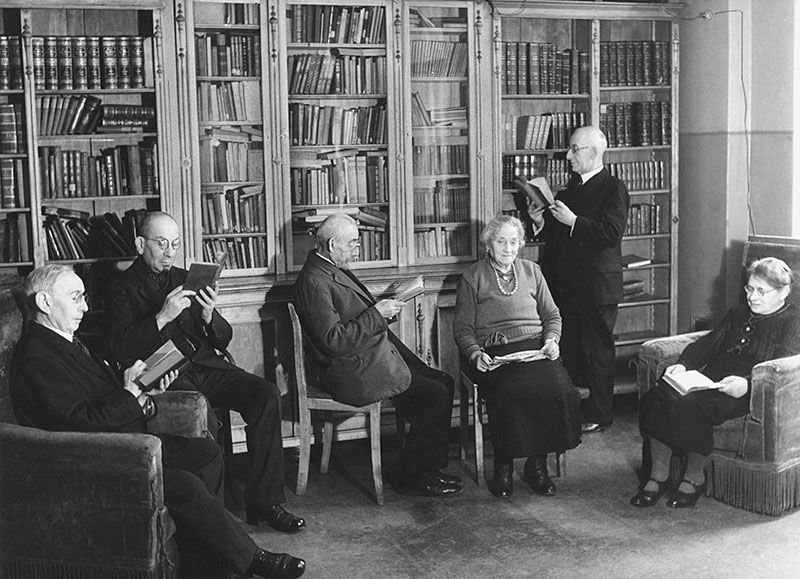Es wird an die Geschichte der 2. Altersversorgungsanstalt der Jüdischen Gemeinde zu Berlin und seines Stifters Moritz Manheimer erinnert.
Im Jahre 1880 stifteten Bertha und Moritz Manheimer die Mittel zum Bau eines jüdischen Altersheimes. Nach der Eröffnung der nach Plänen von Carl Schwatlo an der Schönhauser Allee entstandenen II. Altersversorgungsanstalt der Jüdischen Gemeinde zu Berlin am 11. November 1883 und baulichen Erweiterungsarbeiten konnten hier seit 1892 bis zu 80 Frauen und Männer ihren Lebensabend verbringen. Infolge der staatlich verordneten Diskriminierung und Verfolgung nach der Machtergreifung durch die Nationalsozialisten stieg die Zahl bedürftiger Juden, die im Altersheim in der Schönhauser Allee Aufnahme oder zumindest Verpflegung suchten. Am 17. August 1942 wurden die meisten Bewohnerinnen und Bewohner mit dem ersten »großen Alterstransport« nach Theresienstadt deportiert und später ermordet. Das zwangsverkaufte Grundstück ging 1944 in den Besitz der Stadt Berlin über, und in das Haus wurden ukrainische Zwangsarbeiterinnen einquartiert. In der DDR befand sich im Gebäude die Volkspolizeiinspektion Prenzlauer Berg, und noch bis 2001 wurde das Gebäude von der Berliner Polizei genutzt. Das nach jahrelangem Leerstand sanierte Gebäude ist heute Teil einer Anlage mit Eigentumswohnungen. (aus der Presseinformation vom 27.10.2015)
Die Enthüllung einer Gedenktafel und einer Informationsstele für das ehemalige jüdische Altersheim war 30.10.2015 in der Schönhauser Allee 22, 10435 Berlin.


